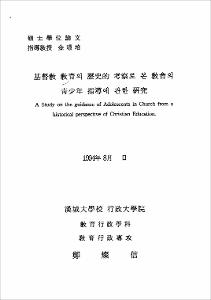基督敎 敎育의 歷史的 考察로 본 敎會의 靑少年 指導에 관한 硏究
- Files in This Item:
-
-
Download
 000000066293.pdf
기타 데이터 / 2.4 MB / Adobe PDF
000000066293.pdf
기타 데이터 / 2.4 MB / Adobe PDF
-
Items in Repository are protected by copyright, with all rights reserved, unless otherwise indicated.
 000000066293.pdf
기타 데이터 / 2.4 MB / Adobe PDF
000000066293.pdf
기타 데이터 / 2.4 MB / Adobe PDFItems in Repository are protected by copyright, with all rights reserved, unless otherwise indicated.